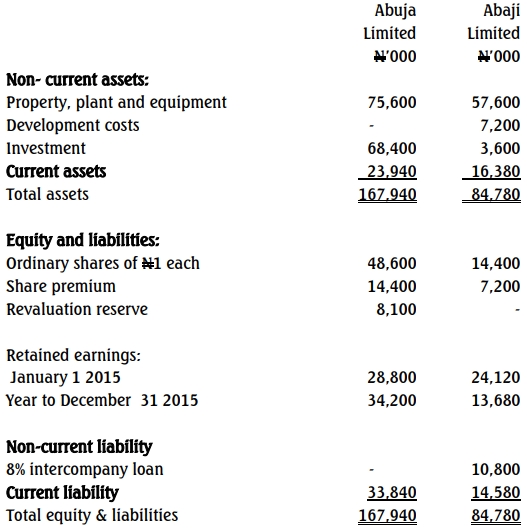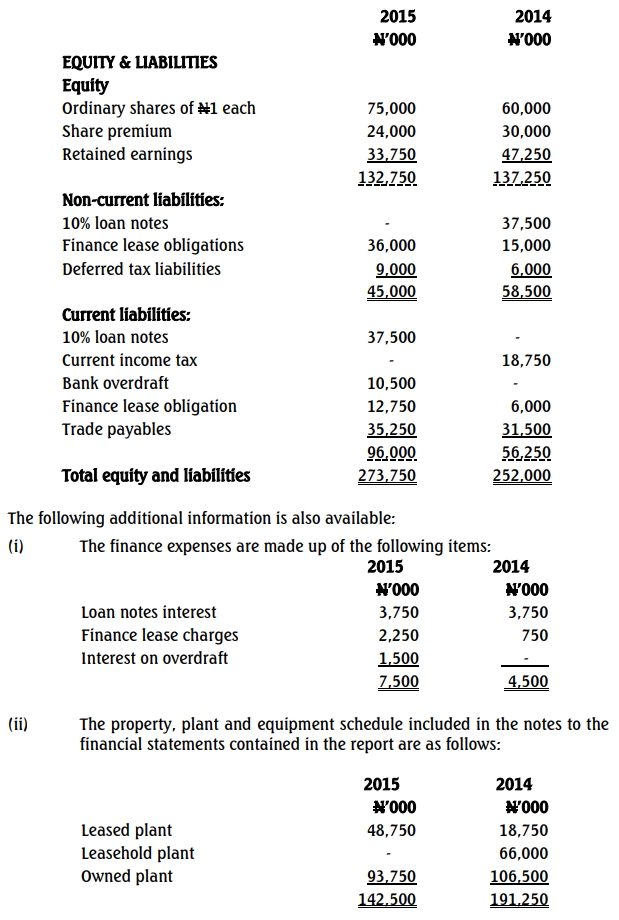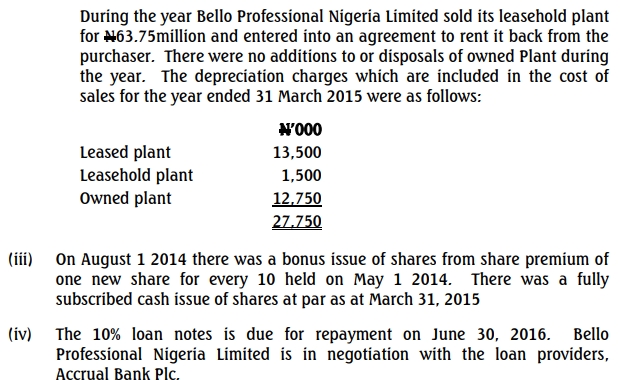As a result of privatisation and commercialisation exercise currently going on in the country, the Ministry of Transport sold the assets and liabilities of the newly constructed standard gauge railway to a private company known as Stalus Rail Limited (SRL) to ensure smooth operations of the railway services by freeing it from government bureaucracy.
The summarised extracts of the statement of financial position at fair value of SRL on January 1, 2019, reflecting the terms and conditions of the sales agreement of the Transport Ministry are as follows:
| N’m |
Assets |
| Goodwill |
150,000 |
| Operating licence |
900,000 |
| Property – Train stations and land |
225,000 |
| Rail tracks and coaches |
225,000 |
| Two (2) train engines |
750,000 |
| Total Assets |
2,250,000 |
Liabilities:
The operating licence is for a ten-year period issued on January 1, 2019, by the Transport Ministry and is stated at cost. The carrying value of the property and rail track and coaches is based on value in use, while the engines are valued at their net selling prices.
On February 1, 2019, one of the train engines got damaged due to a technical fault from the manufacturer and was completely destroyed. The sale of the assets to SRL was without recourse to the Transport Ministry or the manufacturer of the engines.
In view of this, it was estimated that there would be reduced passenger capacity, and the estimated value in use of the whole train service business of SRL was assessed at N1,500 billion.
The number of passengers after one of the engines was damaged was below expectation, even allowing for the reduced capacity. Consequently, the value in use of SRL rail services was re-assessed on March 31, 2019, at N1,350 billion. On this date, SRL received an offer of N675 billion from Papaya Railway Services Limited (PRSL) for the operating licence (since it is transferable). The realisable value of the other assets has not changed significantly.
Required:
a. Draft a memo addressed to the MD of Stalus Rail Limited (SRL) explaining the basis of allocating an impairment loss to the assets of a cash-generating unit in accordance with IAS 36 on impairment of assets.
(6 Marks)
b. Calculate the carrying amount of the assets of SRL Limited as at February 1, 2019, and March 1, 2019.
(10 Marks)
c. Explain TWO conditions that must exist before an impairment loss can be reversed.
(4 Marks)





